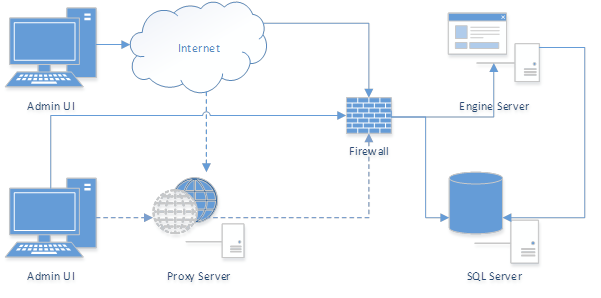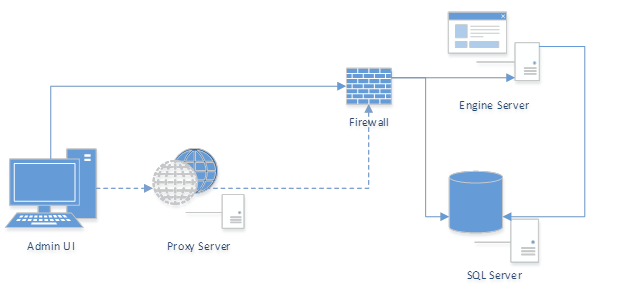A.1 Transition to Direct Database Access
Historically, the Admin Client has used XML-RPC to perform all interactions with the Engine. File Dynamics is transitioning away from that model and moving towards directly accessing certain resources where direct access makes more sense. Direct access to the SQL Server database now takes place for the following:
-
Events
-
Event Properties
-
Object History
-
GSR Collector Data
This change in behavior means that the Admin Client will no longer only be subject to firewall rules regarding the Engine’s listening port (3009 is the default). Instead, greater consideration needs to be given to the environment and how the Admin Client will be used to access it. This also introduces a breaking change with interaction between the Admin Client and the Engine.
NOTE:The Admin Client can authenticate only to a matching version of the Engine. For example, version 6.5 of the Admin Client can only authenticate to a matching File Dynamics 6.5 Engine.
A.1.1 Legacy Environment
In a legacy configuration, the Admin Client would communicate with the Engine server host directly over a WAN, over the internet, and perhaps through a proxy. In all cases, communication would ultimately go through a firewall to the Engine server host.
Figure A-1 Legacy Environment

A.1.2 New Environment
Given the new requirements of direct database access, the Admin Client will now need to have access to the SQL Server host through a proxy server or firewall, depending on the your requirements. If access to the SQL Server host is allowed over the internet, the following represents a likely scenario:
Figure A-2 New Environment

If access to the SQL Server host is restricted to the LAN/WAN, the following represents a likely scenario. In this case, it might be necessary for an administrator to connect through a VPN to access and manage the product. In most cases, it will no longer possible to manage the product outside of the corporate network.
Figure A-3 New Environment Restricted to LAN/WAN

A.1.3 Database Host Address
In previous releases, the Database Host Address in the Engine's configuration was able to be set to the localhost address of 127.0.0.1. Now that the Admin Client is reliant upon direct access to the SQL Server database, this is no longer supported. A valid DNS FQDN or IP address is required.
This value needs to be updated and saved by using the Engine's Database Configuration Wizard. If the Database Host Address is set to 127.0.0.1, the Wizard will attempt to convert it to a DNS FQDN and correct this value automatically on an upgrade. During a new installation, the DNS FQDN of the local machine will be used by default.